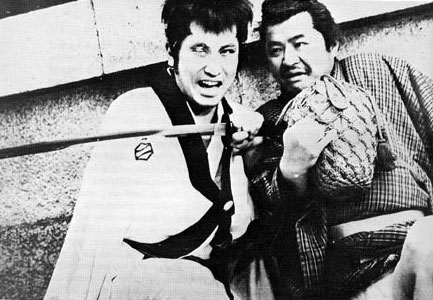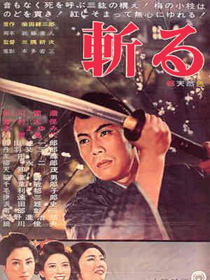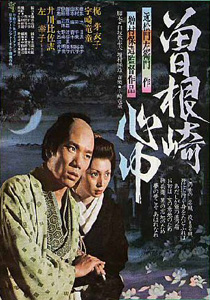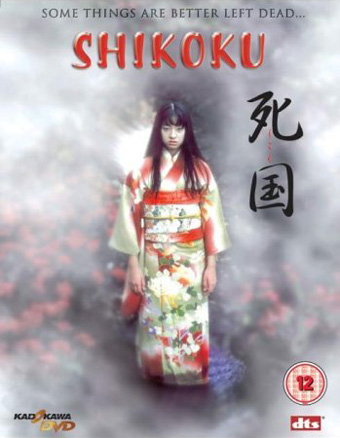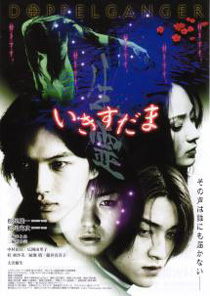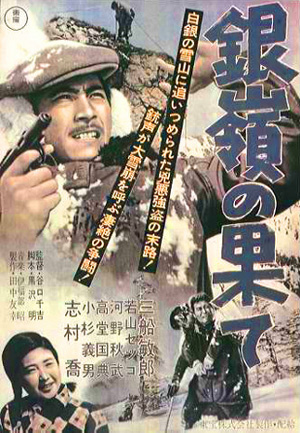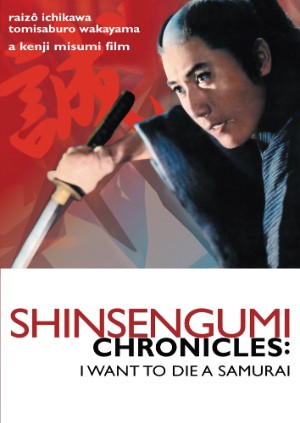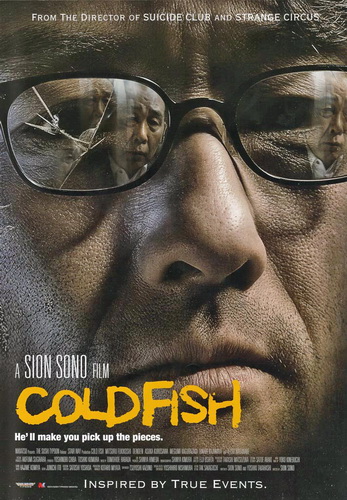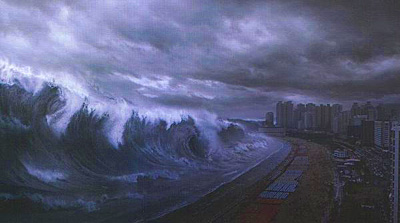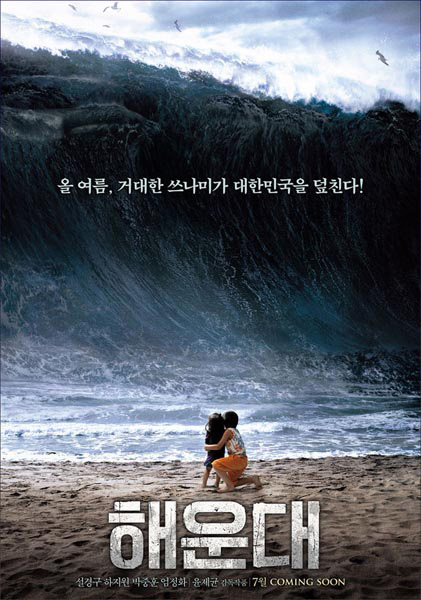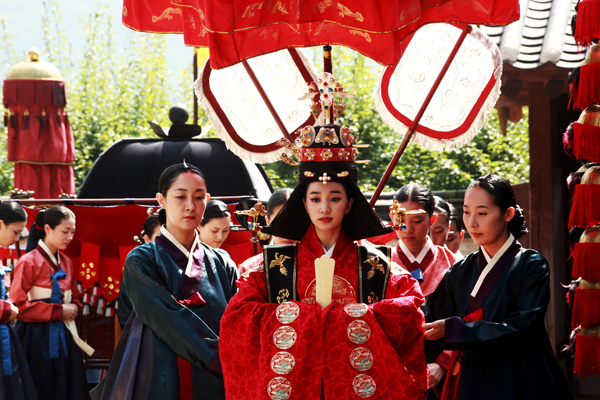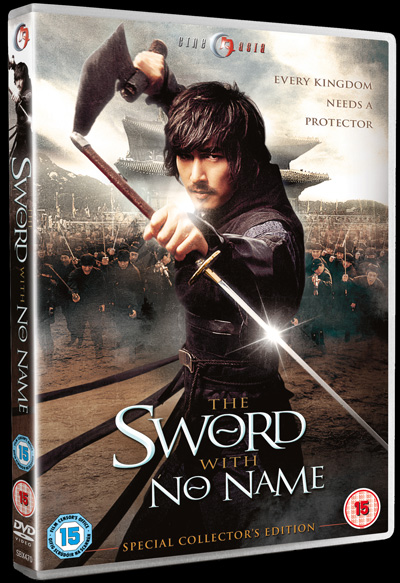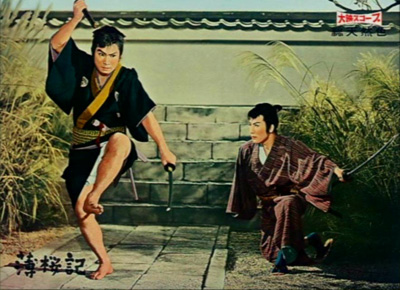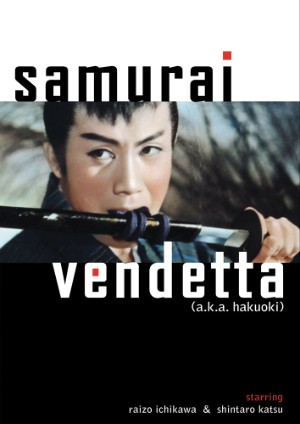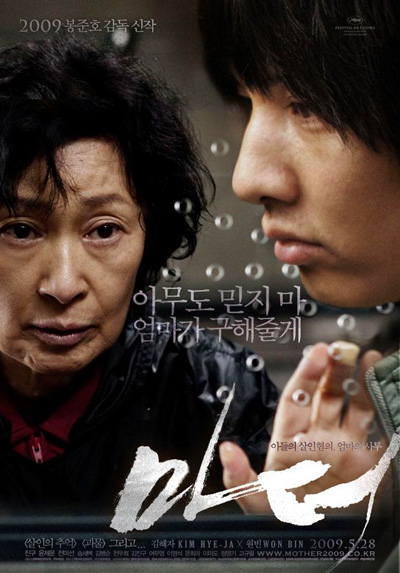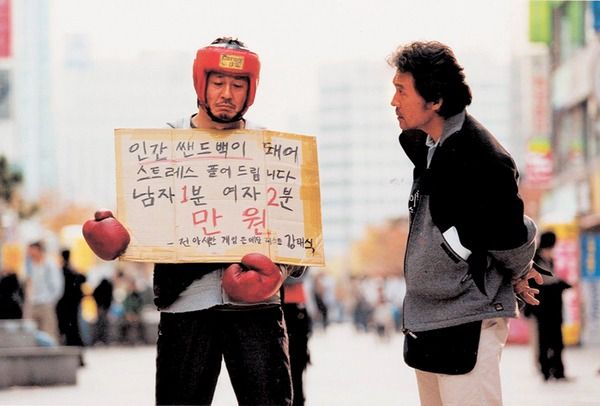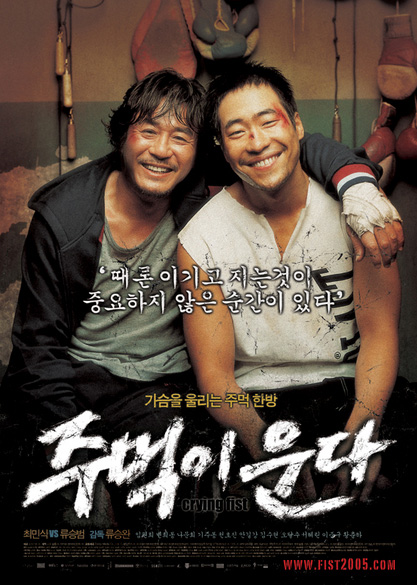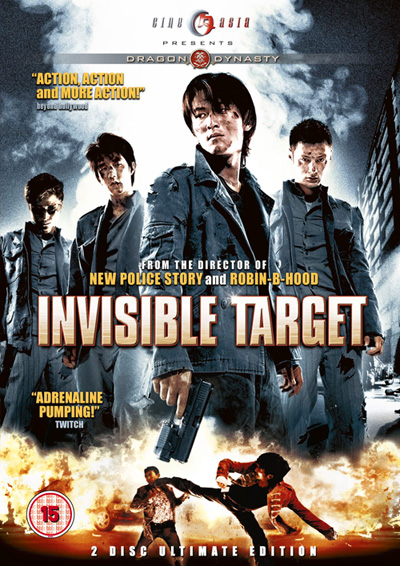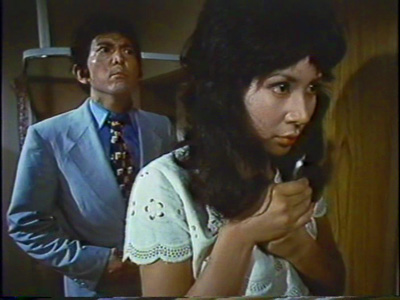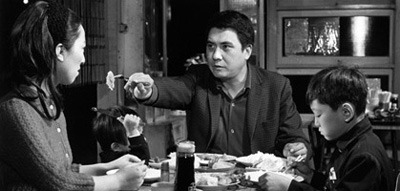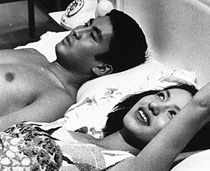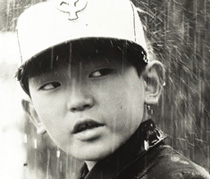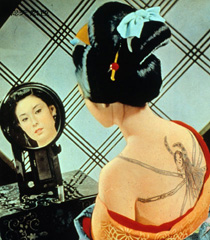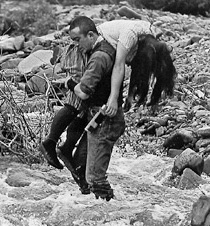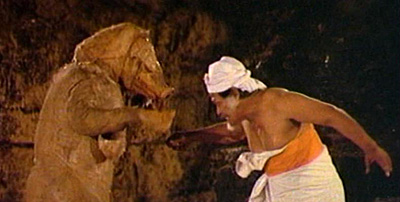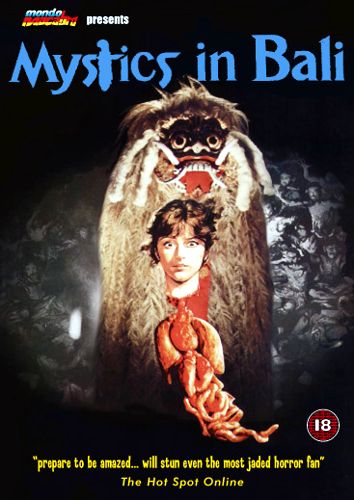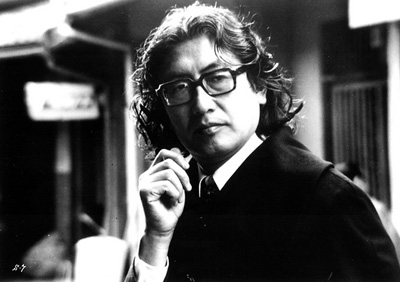
Warning: DVD manufacturers often use the box set as a way to get you to buy sucky movies. Case in point: Criterion's Eclipse label box set
Oshima's Outlaw Sixties. Of the five films on offer here, only one (or maybe two) really warrants a look in. So let me save you a little money by reviewing the rest of them (for more see
Nagisa Oshima Pt. 1) as well as one more that Criterion really ought to release.
Three Resurrected Drunkards (1968)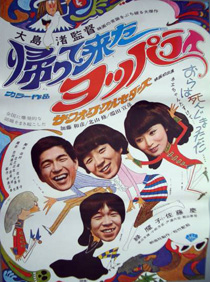
This kooky bit of piffle comes as close to a typical Sixties romp as Oshima is likely to get. The misleadingly-titled film stars real life pop group The Folk Crusaders as three decidedly sober students who fall victim to a couple of South Korean soldiers. The latter have deserted, not wanting to fight in Viet Nam, and have entered Japan illegally. They steal the clothes of two of the students and assume their identities. So far, so good. But then things get sillier and sillier until, about halfway through, the whole movie
starts all over again; after about ten minutes of the exact same opening sequence, things finally get going in a slightly different direction. This film further fed my suspicion that Oshima was interested in not only provoking his audience, but actually alienating if not downright
annoying them. This extends to showing the three young guys ridiculing the famous Eddie Adams
photo of the summary execution of a Vietcong soldier. Redeeming features: Kei Sato (as one of the deserters) and Fumio Watanabe doing an OTT dastardly character (it's fun to watch him playing it for laughs for once). But really, this film was a waste of my time.
Japanese Summer: Double Suicide (1967)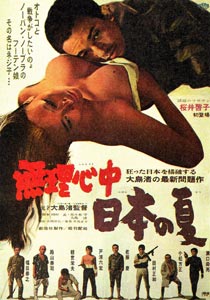
Another study in driving the audience up the wall. A buxom young lass (Keiko Sakurai) wanders around looking for a man, any man, to have sex with. A gaunt, haunted-looking man (Kei Sato) wants someone to kill him. Elsewhere, a young guy longs to shoot a gun, a rotund monster of a man likes to stab people, an old man spends a long time repairing a gun, a group of heavily armed men prepare for a gun battle, most of the main characters are held against their will, and for the first hour
nothing happens. The girl seduces several men to no avail; Kei Sato jumps in front of every brandished weapon -- nobody will kill him; the gang war never comes off. It's all talking and no action. Once again, Oshima is, well there's no other term for it:
He's fucking with us. Finally things kick off, and the remaining forty minutes are an explosion of general mayhem, the various main characters befriending a young, caucasian psycho sniper character similar to the one in Peter Bogdanovich's
Targets (although Bogdanovich's film came out a year later -- go figure) for a grand finale shoot out with the cops. To its credit, the film's B&W photography and
avant garde production design are visually stunning and the performances are great. So if you're up for an hour of stultifying,
Waiting for Godot-style existential nothingness followed by a lot of shooting and killing, this is your movie.
The Ceremony (1971) 
This was the other film, along with
Boy (1969), recommended to me as among Oshima's best. I'd have to agree, but it's far more uneven than
Boy and, in
Audie Bock's phrase, "discouragingly complex." The story concerns the Sakuradas, a wealthy, provincial family that, over the course of roughly 25 years (from the immediate post-war period to the "present") completely disintegrates. Narratively, we're dropped into the story with no explanations, and forced to catch up as best we can through flashbacks. "The Ceremony" isn't any one in particular, but rather a collective reference to the series of weddings and funerals we follow throughout the film; these events, and the increasingly outrageous behavior of their participants, serve as way stations on the family's ever-spiraling downward trajectory. What kind of outrageous behavior, you ask? Let's see, there are incestuous dalliances, corpse bothering, a wedding with no bride (during which a coup attempt occurs), someone is affixed to a tree with a samurai sword, a young man sexually assaults his grandfather -- is that outrageous enough for you? Bear in mind, however, that these scenes come at the price of interstitial
longueurs. Yes, pacing is a problem here; overlong voice-overs, tedious conversations, vague, dark scenes where nothing much happens. The question I asked myself as a critic was, "Does it all even out? Are the interesting bits worth the slog?" I suppose so. I can't really say no. It's just a shame no one thought to cut 120 minutes down to 100; it would have improved the picture immeasurably. Those interested in post-war history and politics will find many passing references and subtle commentary woven into the story, and, once again, the cinematography is gorgeous and the performances are first rate.
So that's it for Oshima for awhile. Having now seen a dozen of his films, I think I've gotten a better handle on his
oeuvre. Although he is, as Bock puts it, "almost impossible to pin down stylistically, except in terms of recurrent favorite symbols," there's no denying his films boast great strengths in terms of craft and performance. It's only the filmmaker's perversity that gets in the way. If I didn't hate the expression, I'd say Oshima's a little too smart for his own good. But maybe I don't have the right to be that condescending. I dunno, you tell me.
 Hey, if you're in Portland, Oregon on Friday, December 10th and have nothing better to do, why not fall by the Northwest Film Center and take in a samurai film? Namely The Hidden Blade (2004), the second in Yoji Yamada's Samurai Trilogy. I'll be introducing the film; I also wrote a bit about it in Warring Clans, Flashing Blades. There will be a book-signing after the screening, so if you've already bought a copy (god bless you), bring it and I'll sign it. Otherwise, there will be copies available for purchase. See you there!
Hey, if you're in Portland, Oregon on Friday, December 10th and have nothing better to do, why not fall by the Northwest Film Center and take in a samurai film? Namely The Hidden Blade (2004), the second in Yoji Yamada's Samurai Trilogy. I'll be introducing the film; I also wrote a bit about it in Warring Clans, Flashing Blades. There will be a book-signing after the screening, so if you've already bought a copy (god bless you), bring it and I'll sign it. Otherwise, there will be copies available for purchase. See you there!

